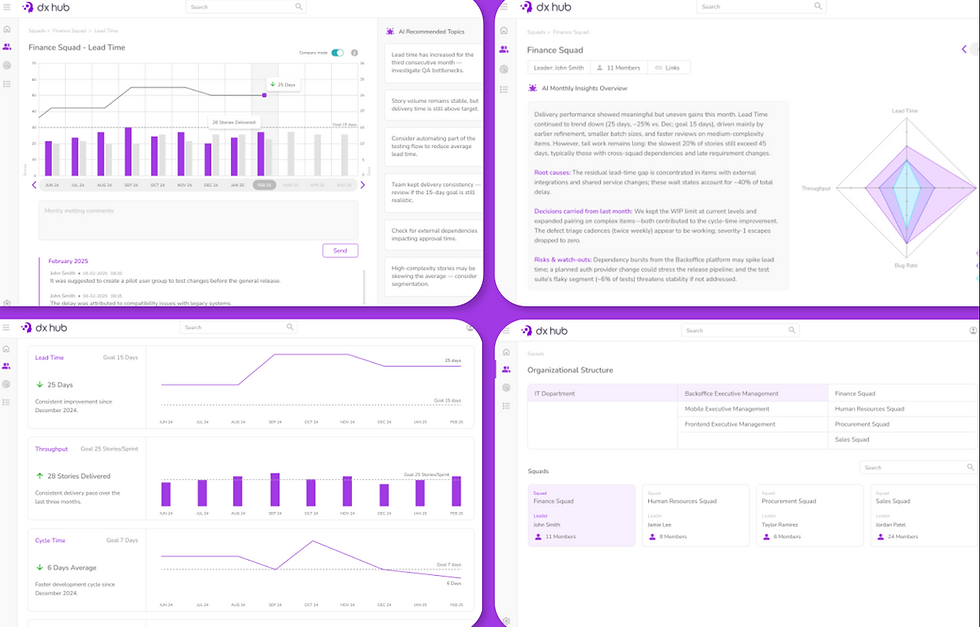Exploring the Nuances of Minimizing Threats in Risk Management Strategies
- Avalia

- Aug 19, 2024
- 4 min read
Organizations face increasing security risks. Building a strong risk management strategy is essential to reducing these threats. The best approach involves using industry-standard security methods like NIST, ISO 27001, and CIS, which offer a structured way to identify, assess, and manage risks effectively.
Understanding Risk Management
Risk management involves recognizing potential threats to an organization’s data, infrastructure, and operations, and putting strategies in place to manage those risks. A successful strategy involves understanding both external and internal risks, evaluating their potential impact, and setting up controls to reduce vulnerabilities.
NIST Framework for Cybersecurity
The National Institute of Standards and Technology (NIST) Cybersecurity Framework is widely used for managing and reducing cybersecurity risks. It’s structured around five core functions:
Identify: Determine the resources and assets that need protection. Identifying critical assets is the foundation for all risk management strategies.
Protect: Implement safeguards such as access controls, training, and security policies to limit the impact of potential incidents.
Detect: Ensure timely discovery of cybersecurity events through monitoring and advanced detection systems.
Respond: Develop response plans and communication strategies to manage incidents quickly once detected.
Recover: Focus on restoring capabilities or services affected by a security incident to ensure resilience.
Organizations across industries use the NIST framework because of its flexibility and its ability to work alongside other security approaches.
ISO 27001: Information Security Management
ISO 27001 is another key framework, focused on establishing an Information Security Management System (ISMS). It helps organizations protect sensitive information through a systematic approach to managing data security. The ISO 27001 standard emphasizes continuous improvement through a Plan-Do-Check-Act (PDCA) model.
Plan: Identify risks, establish objectives, and define controls to address identified risks.
Do: Implement the controls and processes outlined in the plan.
Check: Monitor and review the ISMS performance to ensure it meets security objectives.
Act: Take corrective and preventive actions based on monitoring results.
By adopting ISO 27001, organizations can manage security in an organized way while also aligning their strategy with regulatory compliance needs.
CIS Controls: Practical Safeguards for Threat Mitigation
The Center for Internet Security (CIS) Controls provides a prioritized set of actions to defend against common cyber-attacks. These controls are divided into three implementation groups (IG1, IG2, and IG3) based on the organization’s maturity level. CIS Controls are valued for offering practical, actionable guidelines that can be implemented quickly.
Key controls include:
Inventory and Control of Hardware/Software: Keeping a complete inventory of devices and applications to control what enters and exits the network.
Vulnerability Management: Regularly scanning for and addressing vulnerabilities to prevent exploitation.
Security Awareness and Training: Promoting a security-focused culture through education and awareness programs.
Incident Response and Management: Establishing procedures to detect, respond to, and recover from incidents effectively.
CIS Controls are especially helpful for small to medium-sized businesses looking for straightforward and highly effective measures to improve their security.
Integrating Frameworks for a Unified Strategy
The most effective way to minimize threats is often to combine multiple frameworks into a cohesive risk management strategy. NIST’s broader approach, together with ISO 27001’s structured ISMS and CIS’s practical controls, creates a layered defense. By aligning their risk management strategies with these frameworks, organizations can ensure they address all aspects of cybersecurity, from policy and governance to incident response and continuous monitoring.
Use Case: Financial Institution
Consider a mid-sized financial institution facing increased regulatory pressure and sophisticated cyber threats. This institution handles large volumes of sensitive customer data and financial transactions daily. To meet its risk management needs, the institution integrates NIST, ISO 27001, and CIS frameworks into a unified strategy:
Identifying Critical Assets and Risks (NIST & ISO 27001): The institution begins by cataloging its most critical assets, such as customer databases, payment systems, and internal applications. Using a risk assessment aligned with NIST and ISO 27001 guidelines, they evaluate potential vulnerabilities and identify high-priority threats, such as phishing attacks, ransomware, and insider threats.
Implementing Protective Controls (ISO 27001 & CIS): Based on the risk assessment, the institution adopts CIS controls, focusing on securing endpoints, implementing multi-factor authentication (MFA), and setting up strong access management policies. The ISO 27001 ISMS is also used to establish continuous monitoring processes and ensure compliance with regulatory requirements like GDPR and PCI-DSS.
Detecting and Responding to Threats (NIST & CIS): The institution deploys advanced threat detection tools and sets up a security operations center (SOC) for 24/7 monitoring. Following NIST’s guidelines, they establish incident response playbooks and train their staff regularly on handling breaches and data leaks.
Ensuring Business Continuity (NIST & ISO 27001): To protect against operational disruptions, the institution follows NIST’s recovery protocols and ISO 27001’s business continuity requirements. They conduct regular disaster recovery drills and maintain backup systems to quickly restore services in the event of an attack.
By engaging a consulting firm to guide the integration of these frameworks, the financial institution saw significant improvements:
30% reduction in incident response time due to improved detection and streamlined processes.
40% decrease in the number of security breaches after implementing enhanced controls and continuous monitoring.
25% cost savings in managing compliance efforts, as the frameworks provided standardized approaches that reduced redundant tasks and aligned processes across departments.
These results demonstrate how a consulting firm’s expertise can accelerate the deployment of best practices, leading to a measurable reduction in threats and operational inefficiencies.
Conclusion
Reducing threats in today’s digital world requires more than just ad hoc measures. Utilizing well-established frameworks like NIST, ISO 27001, and CIS gives organizations structured, proven strategies to manage risks effectively. By incorporating these frameworks into their operations, organizations can build resilience, enhance their threat detection capabilities, and maintain compliance with industry standards.


